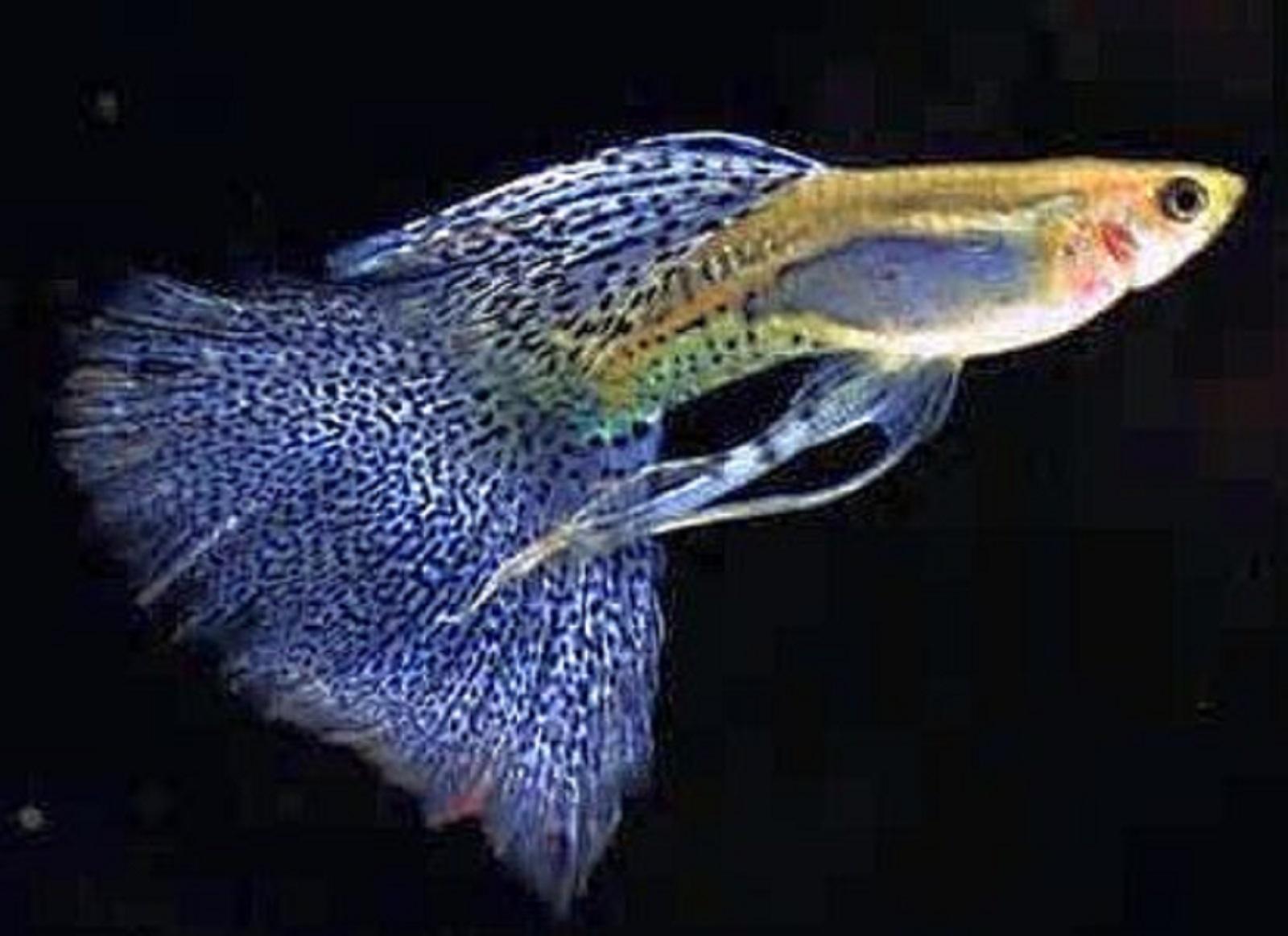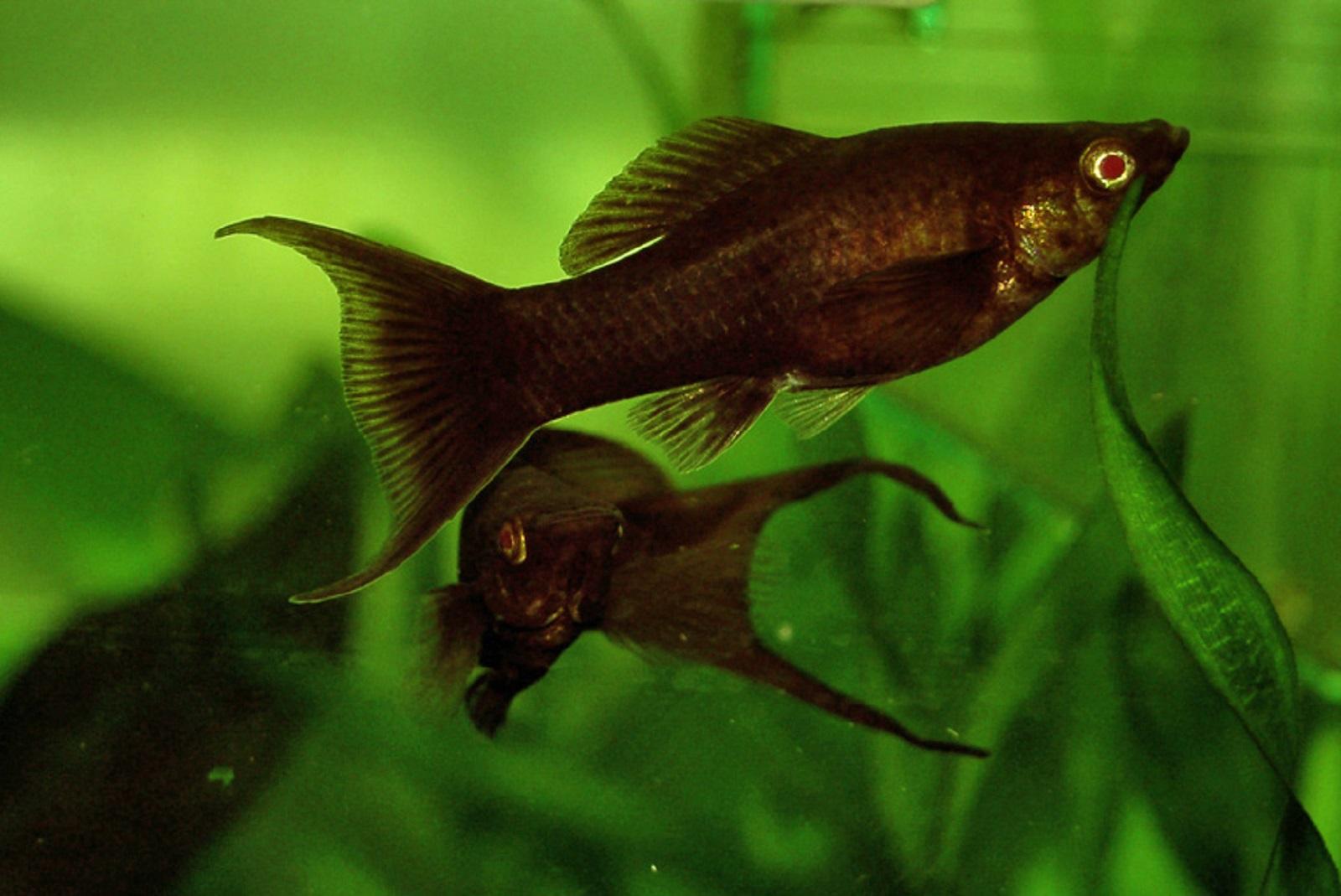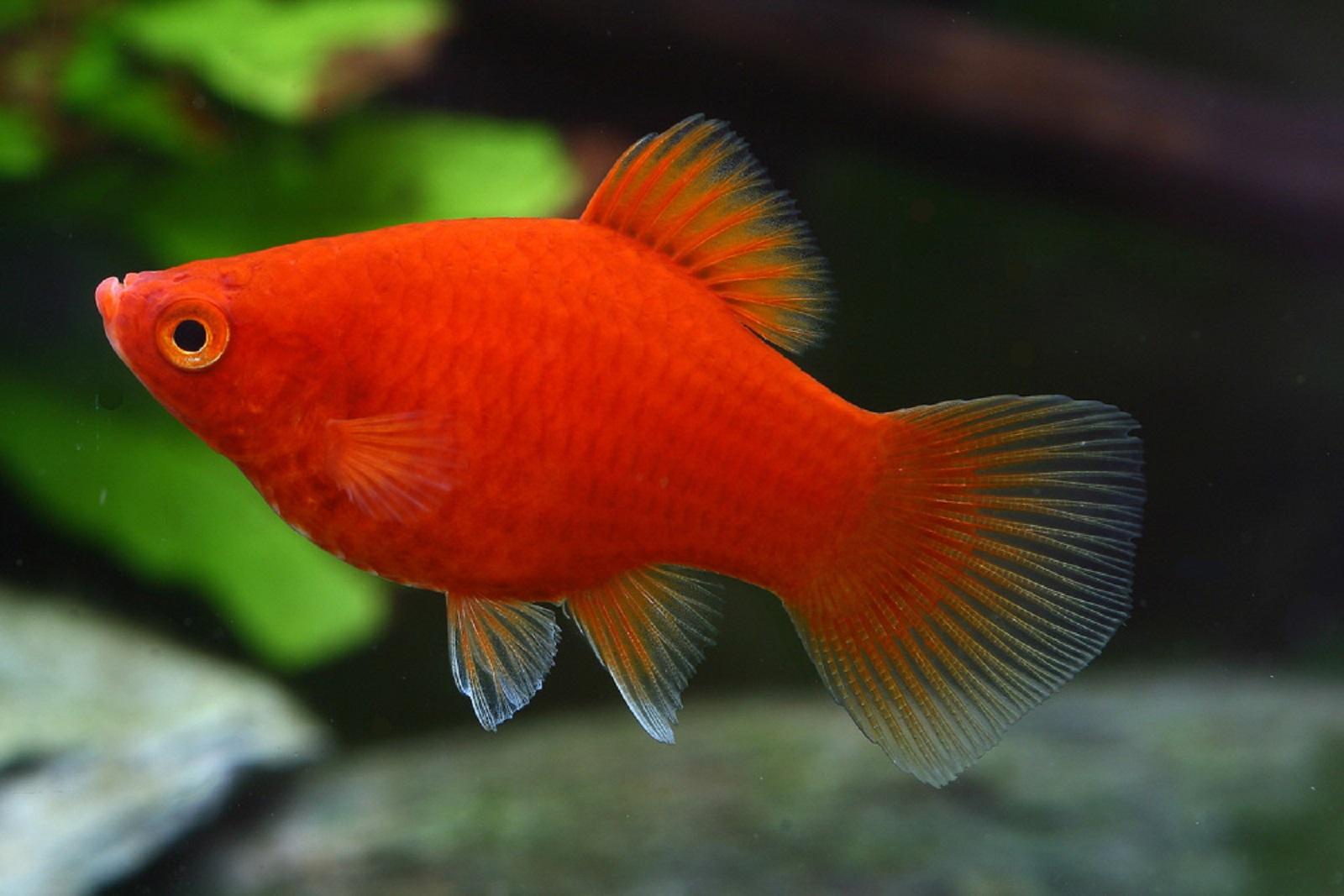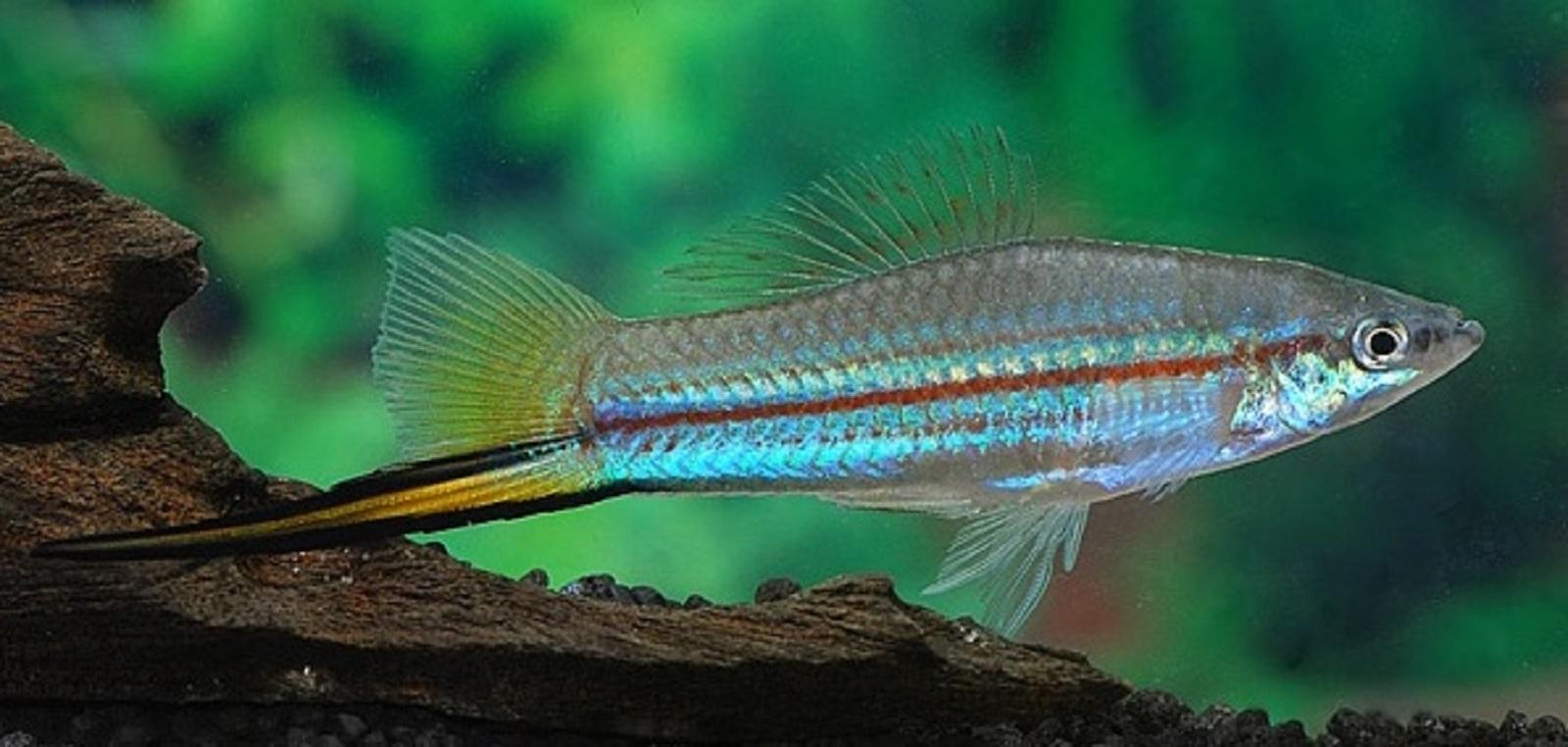Livebearers of Ornamental Fishes
Livebearers of Ornamental Fishes
Livebearers are fish that bear live young ones. There are two types of livebearers namely ovoviviparous and viviparous
- Ovoviviparous : Where the eggs form and hatch within the female before birth.
- Viviparous: Where no eggs are formed, and the young are nourished through an umbilical-like cord or from secretion by the female.
Commercially important livebearers
Livebearers are prolific and are easily bred; of these most important livebearers are guppy, molly, swordtail, and platy. These fishes mature between four to six months while the guppy and platy mature within just two months.
Guppy

- Name of the species: Guppy Poecilia reticulata (Peters, 1859)
- Family: Poeciliidae
- Size: up to 5 cm
- pH range: 7.0 – 8.0
- Temperature: 18 – 28oC
- Food habit: Omnivorous
- Distribution: South America and Africa
Description : The males possess beautiful colouration, which may be red, green, yellow, blue and black with dark marks super imposed. The tail fins are of variable shape. It’s a hardy species by nature, and it can tolerate a wide range of temperature.
Molly

- Name of the species: Molly Poecilia sphenops (Valenciennes, 1846)
- Family: Poeciliidae
- Size: up to 7.5 cm
- pH range: 7.5 – 8.2
- Temperature: 18 – 28oC
- Food habit: Omnivorous
- Distribution: South America and Africa
Description: They are jet-black and have a velvety texture. Male dorsal fins are large. Mollies require plenty of vegetable matter in the diet. Male has gonopodium and females are larger and plumper. Mollies must be kept in a salt-water environment. If a teaspoon of Epson salt plus a drop of 5 per cent solution of Methylene blue is added to each 5 litre of aquarium, the fish will fare much better.
Southern platyfish

- Name of the species: Southern platyfish Xiphophorus maculatus (Günther, 1866)
- Family: Poeciliidae
- Size: up to 4.0 cm
- pH range: 7.0 – 8.0
- Temperature: 18 – 25oC
- Food habit: Omnivorous
- Distribution: North and Central America
Description: The platy colour is gray with dark speckles, sometimes red, in the dorsal fin. The male has gonopodium, and the female has round abdomen when gravid.
Green swordtail

- Name of the species: Green swordtail, Xiphophorus hellerii (Heckel, 1848)
- Family: Poeciliidae
- Size: up to 14.0 cm
- pH range: 7.0 – 8.0
- Temperature: 22 – 28OC
- Food habit: Omnivorous
- Distribution: North and Central America
Description: The swordtail is a shiny green marked with red horizontal stripes red line along the centre of the body in particular distinct. Males are smaller than the female. It prefers live feed rather than artificial diet.
Sexual identification of male and female
|
|
Male |
Female |
|
1 |
Smaller |
Larger |
|
2 |
Brightly coloured and attractive |
Dull coloured |
|
3 |
Dorsal and caudal fins are longer |
Comparatively smaller |
|
4 |
Belly region is flat |
Belly region bugled |
|
5 |
Anal fin is modified into gonopodium which is a rod or tube like structure |
Anal fin is normal in shape |
Breeding
Conditioning of parent fishes is essential before placing them together for spawning. For this, feed the fishes with a variety of healthy food such as flake food, brine shrimp, insect larvae and earthworms to make them attain suitable condition for spawning. While conditioning, the male, and females are separated, such fishes when reintroduced, will be ready to spawn.
The eggs are situated in the egg duct where they are fertilized. Upon hatching, the fry is not immediately delivered, but they remain in the safety of the mother’s body until they reach a stage of development equivalent to the young of egg layers that have absorbed the yolk sac and become free swimming. The ideal temperature must be maintained at 27OC.
As the male matures, the anal fin became more pointed and straightened into a rigid tube like projection, which is called gonopodium. The gonopodium is typically close to the body and pointing rearwards. It is a mobile organ, can be angled in almost any direction. The males court the females with their fins erect, and they chase the female until the opportunity presents itself for a lightening thrust of the gonopodium. The female is fertilized by the nearest touch of the gonopodium on her vent, and one fertilization will last for several broods. Unlike the male, the female has normal anal fin. Females can have upto eight broods from one fertilization, therefore, it is unnecessary to re-mate after the first brood. The gestation period is constant for every species.
Females about to give birth are said to be ripe. This condition can be determined by the appearance of the dark, crescent shaped area in the female body close to the vent known as the gravid spot, which is accompanied by a general fattening of the belly when viewed from above. The eggs develop and actually hatch out inside the mother and leave her body as fully developed fish. The number of young in a brood is largely dependent upon the size of the female. Irrespective of the number in the brood the fry are approximate all the same size at birth.
Livebearers are notorious cannibals; they will devour their young ones as soon as they are born. This can be prevented by having an abundance of cover for the young ones in the form of bunched fine leaved plants, or to use a breeding trap, which restricts the female to a small part of the aquarium, but allows the fry to escape into the wider reacher of the breeding tank.
The preparation for the breeding tank is simple. It need not be too large for most species and should be filled to a depth of about 20cm with matured water, and the temperature is raised to about 25OC. The tank should be well stocked with fine leaved plants. Once the female has given birth to the full brood she can be removed. Instead of plants, nylon knitting wools can also be used. Handling livebearers when they are near the time to delivery can cause premature birth. Premature babies have not completely absorbed their yolk sac, which can be seen attached to their bellies. Livebearers normally kept in a community aquarium tank will breed indiscriminately, and will often crossbreed between similar species. If the aquarist is interested in obtaining a particular colour strain or any other feature for that matter, it is imperative that the sexes are housed separately.
Number of young ones
The number of young ones on an average is about 20 – 40. It depends on the size of brood fish, feeds given and tank environmental condition.
|
Sl. No |
Name of the species |
Maximum nos. of young one |
|
1 |
Guppy |
100 |
|
2 |
Molly |
100 |
|
3 |
Platy |
50 |
|
4 |
Swordtail |
200 |
After 2-3 days of release of young ones, the female again becomes pregnant even without the mating with a male. The sperm transferred in first mating is stored in the female body. When eggs are formed the sperm will join with eggs and form young ones. Typically, the female can release young ones for about 8 -10 times in a year.
The new spawn fry can swim and eat from the moment they are born. It accepts infusoria, brine shrimp and even finely crushed dried foods.
References
- Ahilan, B., Felix, N. and Santhanam, R. 2008. Textbook of Aquariculture. Daya Publishing House, New Delhi.
- Fish base. http://www.fishbase.org/search.php
- Ornamental fish production and management, online e-learning on Agricultural Education
- Swain SK., Sarangi, N. and Ayyappan S. 2010. Ornamental fish farming. Indian Council of Agricultural Research, New Delhi.
Last Modified : 7/1/2024
This topic provides details about species profile,...
This topic provides information about brood stock ...
This topic provides information related to culture...
This topic provides information about Breeding, la...
